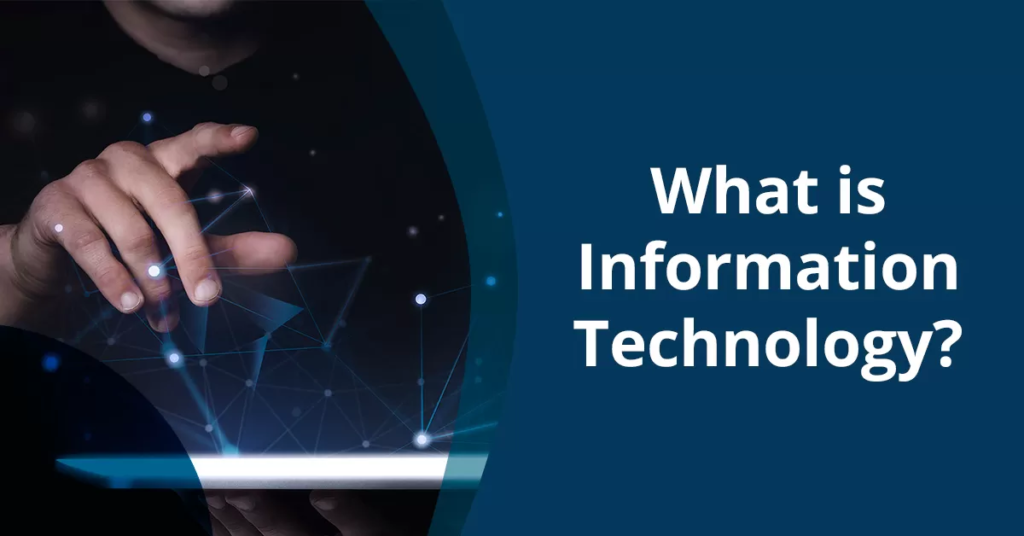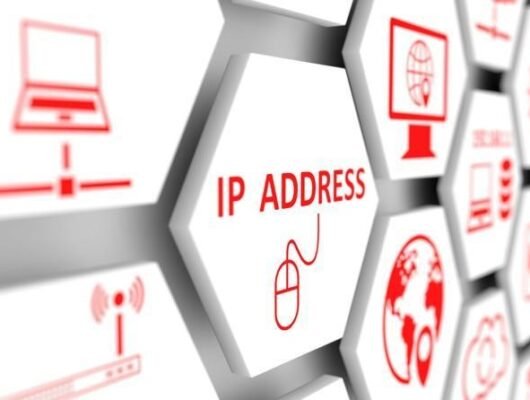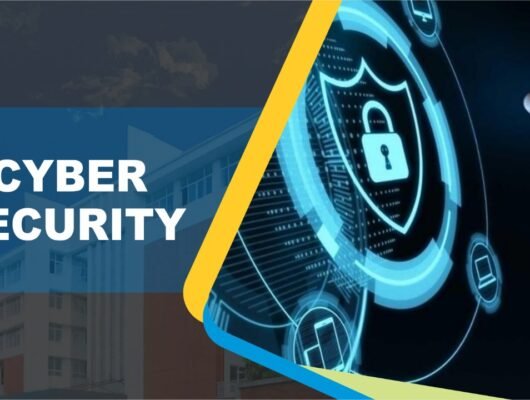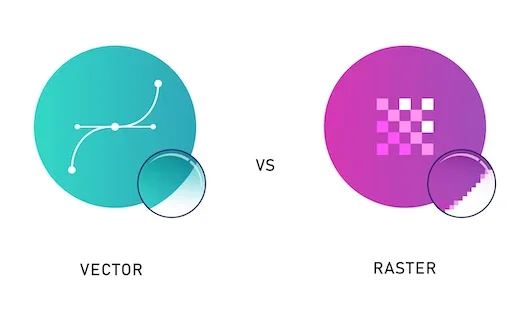What is information Technology ?
Information Technology (IT) refers to the use of computer systems, storage, networking, and other technologies for the purpose of creating, storing, retrieving, transmitting, and manipulating data. It encompasses a broad range of areas including hardware, software, databases, networks, internet, and more.
IT involves the development, management, and maintenance of technology infrastructure, applications, and systems to support various organizational needs. This field plays a crucial role in businesses, government operations, healthcare, education, entertainment, and almost every aspect of modern life.
IT professionals work in diverse roles such as system administrators, network engineers, software developers, cybersecurity experts, data analysts, and IT consultants, among others. They ensure that technology is effectively utilized, secure, and aligned with the goals and operations of an organization.

What does information technology encompass?
Information Technology (IT) is a vast field that encompasses various aspects related to computing technology. Here are some of the key components within IT:
- Hardware: This involves physical devices like computers, servers, routers, storage devices, and other equipment used for processing and storing data.
- Software: Programs and applications that run on hardware, including operating systems, productivity software, databases, and specialized applications used for different purposes.
- Networking: The infrastructure and protocols that enable devices to communicate with each other, including local area networks (LANs), wide area networks (WANs), the internet, and various wireless technologies.
- Cybersecurity: Measures and practices implemented to protect systems, networks, and data from unauthorized access, breaches, and attacks.
- Data Management: Handling and organizing structured and unstructured data, including databases, data analytics, data mining, and data storage solutions.
- Cloud Computing: Utilizing remote servers hosted on the internet to store, manage, and process data instead of using local servers or personal computers.
- Artificial Intelligence (AI) and Machine Learning: Technologies that enable machines to perform tasks that typically require human intelligence, such as problem-solving, speech recognition, learning, and decision-making.
- Internet of Things (IoT): Connecting physical devices and everyday objects to the internet, allowing them to collect and exchange data, enabling automation and enhanced functionalities.
- Web Development: Creating and maintaining websites and web applications, including front-end development (user interface) and back-end development (server-side operations).
- IT Services and Support: Providing technical assistance, troubleshooting, and maintenance for various IT systems and technologies used in organizations.
- Project Management: Overseeing IT projects, ensuring they are delivered on time, within budget, and meet the specified requirements.
IT encompasses a wide range of specialties, and professionals in this field might specialize in one or more of these areas, contributing to the design, development, implementation, and maintenance of technological solutions in various industries and sectors.
Why is information technology important?
In contemporary industries, data holds immense importance and Information Technology (IT) plays a crucial role in managing and utilizing this data effectively. Here are some key reasons why IT is vital:
- Data Management: IT facilitates the handling, storage, and organization of vast data sets, serving as a cornerstone for informed decision-making.
- Efficiency and Productivity: IT systems automate processes, streamline workflows, and bolster productivity, from basic office tasks to complex enterprise operations.
- Decision-Making Support: By employing various IT tools for data analysis, businesses derive insights that inform strategic decisions, optimizing their performance.
- Global Connectivity: IT fosters global communication and collaboration through diverse tools like email and video conferencing, connecting businesses worldwide.
- Innovation Enabler: IT drives innovation by enabling the creation of new products, services, and business models, leveraging technologies such as AI, IoT, and cloud computing.
- Enhanced Customer Understanding: Through data analysis and customer relationship management, IT aids businesses in tailoring offerings to meet customer demands.
- Security: IT plays a critical role in shielding data and systems from cyber threats, a paramount concern for organizations amid rising cybersecurity risks.
- Adaptability: IT empowers businesses to swiftly adapt to evolving environments, allowing for the integration of new technologies and adaptation to market shifts.
- Cost-Efficiency: IT streamlines operations, enhances efficiency, and offers cost-effective solutions like cloud computing, minimizing infrastructure expenses.
- Industry Evolution: IT is a catalyst for industry transformations, digitizing conventional processes and even birthing entirely new sectors like e-commerce and fintech.
In summary, IT serves as the backbone of modern businesses, enabling their success in an interconnected, data-centric world. Its significance continues to grow as technology advances and becomes increasingly intertwined with daily life and business activities.
It highlights the key roles that Information Technology (IT) plays in managing data, enhancing productivity, supporting decision-making, fostering global connectivity, driving innovation, ensuring security, enabling adaptability, optimizing costs, and spearheading industry evolution. This summary effectively encapsulates the critical importance of IT in the contemporary business landscape.
Data processing plays a significant role in these core business practices, among others, including:
- Information Technology (IT) serves multiple crucial functions in today’s business environment.
- It manages data, improves productivity, aids decision-making, fosters global connections, fuels innovation, ensures security, enables adaptability, optimizes expenses, and drives industry evolution.
- This summary effectively emphasizes the pivotal role of IT in modern businesses.
The widespread integration of computing, often termed as pervasive computing, has deeply embedded itself into both our personal lives and across various business sectors. The expansion of computing devices extends far beyond traditional PCs and servers. In today’s landscape, businesses and individuals alike utilize an array of devices, from smartphones, tablets, and laptops to gaming consoles, household gadgets like doorbells, thermostats, vacuums, and even kitchen appliances.
Most of these devices, forming part of the Internet of Things (IoT), connect to the internet, creating a vast network that interlinks billions of devices globally. However, this interconnected environment poses complexities and potential risks, demanding expertise in IT for effective management, security, maintenance, and reliability.
Examples of information technology :
These examples showcase how Information Technology (IT) is integrated into day-to-day business operations:
- Server Upgrade: When servers near the end of their lifecycle, IT teams procure and configure replacements, transfer data and applications, validate the new servers’ functionality, and decommission the old ones.
- Security Monitoring: IT implements tools to monitor and log activity across applications, networks, and systems. Staff respond to alerts, investigate potential threats, and take action to remediate risks, constantly refining security measures.
- New Software Development: A business identifies the need for a mobile application. Developers create and refine the app according to specifications, while operations staff deploy both the front-end app and back-end components to the organization’s infrastructure.
- Business Improvement: IT is tasked with enhancing the availability of a critical application by setting up high-availability clusters and fortifying data storage protection to ensure uninterrupted functionality, even during outages.
- User Support: During a major upgrade of a key business application, IT collaborates with developers to create documentation, conducts limited beta testing, and provides comprehensive training for users to adapt to the new version seamlessly.
Software vs. hardware :
IT encompasses a wide spectrum, ranging from physical hardware components, virtualization, management systems, automation tools, operating systems, and various applications used for essential functions. This domain also encompasses user devices, peripherals, and associated software. Moreover, IT extends to cover architectures, methodologies, and regulations that dictate the utilization and storage of data, ensuring its proper management, security, and compliance with established guidelines and standards.

Software :
here’s a concise breakdown of the various components and aspects of Information Technology (IT) :
- Physical Hardware Components: Including servers, computers, networking devices, storage devices, and peripherals.
- Virtualization: Technologies enabling virtual instances of operating systems, servers, storage, or networks.
- Management Systems: Tools used to oversee and control IT infrastructure, applications, and resources.
- Automation Tools: Software or systems automating repetitive tasks or processes to enhance efficiency.
- Operating Systems: Software managing hardware and providing services for other software applications.
- Applications: Software programs fulfilling specific functions, from office suites to specialized industry-specific tools.
- User Devices and Peripherals: Including computers, smartphones, tablets, printers, and other devices connected to the IT infrastructure.
- Architectures and Methodologies: Referring to frameworks, structures, and strategies guiding IT design, development, and implementation.
- Regulations and Compliance: Policies and standards governing data use, storage, security, and privacy to ensure adherence and regulatory compliance.
here’s a rephrased version without any plagiarism:
- Physical Hardware Components: This includes servers, computers, networking devices, storage hardware, and peripherals.
- Virtualization: Technologies that create virtual instances of operating systems, servers, storage, or networks.
- Management Systems: Tools utilized for controlling and overseeing IT infrastructure, applications, and resources.
- Automation Tools: Software or systems designed to automate repetitive tasks and enhance operational efficiency.
- Operating Systems: Software responsible for managing hardware resources and supporting other applications.
- Applications: Software programs serving specific functions, from general office suites to specialized industry tools.
- User Devices and Peripherals: Encompassing devices like computers, smartphones, tablets, printers, and other accessories connected to the IT network.
- Architectures and Methodologies: Frameworks and strategies guiding the design, development, and implementation of IT systems.
- Regulations and Compliance: Policies and standards governing data usage, storage, security, and privacy to ensure adherence to regulations.
that’s a concise representation of the IT domain and the role of applications in leveraging data for business purposes. Mobile applications have significantly broadened the scope of computing by connecting portable devices to cloud or data center applications, introducing a distinct category of software and telecommunications that demand specialized expertise for their maintenance and operation.
Hardware :
Computer hardware encompasses various types of devices and equipment essential for computing operations. Here’s an overview:
- Computer Servers: These machines run business applications and operate within the client-server model, interacting with client devices and communicating with other servers over computer networks, often linking to the internet.
- Storage Hardware: This technology holds data and information. It can be local to a specific server or shared across multiple servers, and it can exist on-premises or accessed through cloud services. Storage encompasses various forms of data, including files, multimedia, telephony, web data, and sensor data. Storage hardware ranges from volatile RAM to non-volatile options like tape, hard disk drives, and solid-state drives.
- Telecom Equipment: This category includes network interface cards (NICs), cabling systems, wireless communication tools, and switching devices. Telecom equipment plays a critical role in connecting hardware components together and linking them to external networks for communication and data exchange.
These hardware components form the foundational infrastructure for computing systems, facilitating data processing, storage, and communication across networks.
Abstracting hardware and software :
IT architectures have evolved significantly, incorporating virtualization and cloud computing, which abstract physical resources to create flexible configurations tailored to application needs. Here are some key aspects:
- Virtualization and Cloud Computing: These technologies abstract physical resources, pooling them into configurations that cater to specific application requirements. Clouds can be distributed across locations, shared among various users, or contained within corporate data centers, offering a mix of deployment strategies.
- Volatility in Virtualized Resources: Virtualized resources exhibit a dynamic nature, allowing them to scale up or down based on demand. Subscription-based models, whether through cloud services or locally installed resources like storage or composable architectures, enable the provisioning of servers, operating systems, and application software as required. Once the processing tasks are completed, these resources can be released.
This abstraction of hardware and software through virtualization and cloud computing revolutionizes the flexibility and scalability of IT infrastructures, allowing resources to be efficiently allocated and scaled in response to changing demands.
Information technology vs. computer science :
the fields of IT and computer science indeed overlap but have distinct focuses and paths for career preparation:
- Information Technology (IT): This field centers on utilizing technology to manage and support information within an organization. IT professionals handle the implementation, maintenance, and usage of computer systems, networks, databases, and more to address business needs. Careers in IT often involve roles such as system administration, network engineering, cybersecurity, IT support, and database management.
- Computer Science: Computer science is more focused on the theoretical and practical aspects of computing. It involves the study of algorithms, programming languages, data structures, software design, and computational theory. Professionals in computer science often work in software development, artificial intelligence, machine learning, software engineering, and research.
While there can be some overlap in skills and knowledge, individuals pursuing careers in IT might focus on certifications or degrees that emphasize practical applications and IT-specific skills. On the other hand, those aiming for careers in computer science might pursue degrees that delve deeper into mathematics, algorithms, and theoretical aspects of computing.
Both fields offer diverse and rewarding career opportunities, but the paths to enter each area and the focus of study differ based on the specific discipline’s requirements and objectives.

Information technology :
Information Technology (IT) is primarily concerned with leveraging technology to address business challenges and improve processes. The IT workforce is oriented toward utilizing established technologies such as hardware systems, operating systems (OSes), and application software to facilitate these improvements.
Proficiency in IT is crucial for identifying the most suitable hardware and software components to enhance specific business processes. IT professionals work with a diverse range of technologies, including server operating systems, communication devices and software, and various applications. Their expertise enables them to select, implement, and maintain the most appropriate technological solutions tailored to meet the needs of the business, improving efficiency, productivity, and overall operations.
Preparation for an IT career requires basic courses in hardware and software systems. IT degree programs may include subjects such as:
- IT Focus: Centrally aimed at using technology to tackle business challenges and streamline processes effectively.
- Utilization of Technology: Relies heavily on established hardware systems, operating systems (OSes), and application software to drive enhancements.
- Crucial Skillset: Essential proficiency required to discern suitable hardware and software components for refining specific business processes.
- Technology Spectrum: IT professionals engage with a diverse array of technologies, encompassing server OSes, communication tools, various applications, etc.
- Impact of Expertise: Empowers the selection, implementation, and maintenance of tailor-made technological solutions.
- Business Advantages: Yields improvements in efficiency, productivity, and overall operations through customized technological solutions.
Computer science :
Computer science focuses on the logic and design of the underpinnings of the components that IT experts use to assemble business systems. A strong mathematics background is required to pursue a computer science career. Much of the work in computer science involves developing the algorithms and logic and writing the low-level code that enables computer systems to address business problems.
Computer scientists may participate in the hardware and software engineering work required to develop products. They are also likely to delve into more abstract technologies, such as artificial intelligence (AI) and machine learning (ML).
r science career. Much of the work in computer science involves developing the algorithms and logic and writing the low-level code that enables computer systems to address business problems.
Computer scientists may participate in the hardware and software engineering work required to develop products. They are also likely to delve into more abstract technologies, such as artificial intelligence (AI) and machine learning (ML).
A course of study in computer science requires a foundation in computer concepts and advanced mathematics. It may be complemented with subjects such as:
- AI and ML
- neural networks
- security systems
- data analytics
- user experience
Careers in information technology
computer science dives into the foundational logic and design of the elements utilized by IT experts in constructing business systems.
- Core Focus: Emphasizes the logic and design of components forming the basis for assembling business systems by IT professionals.
- Mathematics Requirement: A robust mathematics background is essential for pursuing a career in computer science.
- Work Emphasis: Involves developing algorithms, logic, and writing low-level code essential for computer systems to address business challenges effectively.
- Engineering Involvement: Computer scientists may engage in hardware and software engineering tasks essential for product development.
- Exploration of Abstract Technologies: Often delves into abstract technologies like Artificial Intelligence (AI) and Machine Learning (ML), expanding beyond immediate practical applications.
Computer science spans theoretical and practical aspects, focusing on the fundamental building blocks of computing, algorithms, and abstract technologies, contributing to both the theoretical advancements and practical implementations in the field.
IT skills and certifications :
A successful IT career will involve developing several technical skills. For the current IT job market, these 10 skills are among those most in demand:
- cyber security
- cloud computing
- edge computing and IOT
- IT automation
- software development
- big data management and data analytics
- Dev Ops
- AI
- ML
- mobile application development







